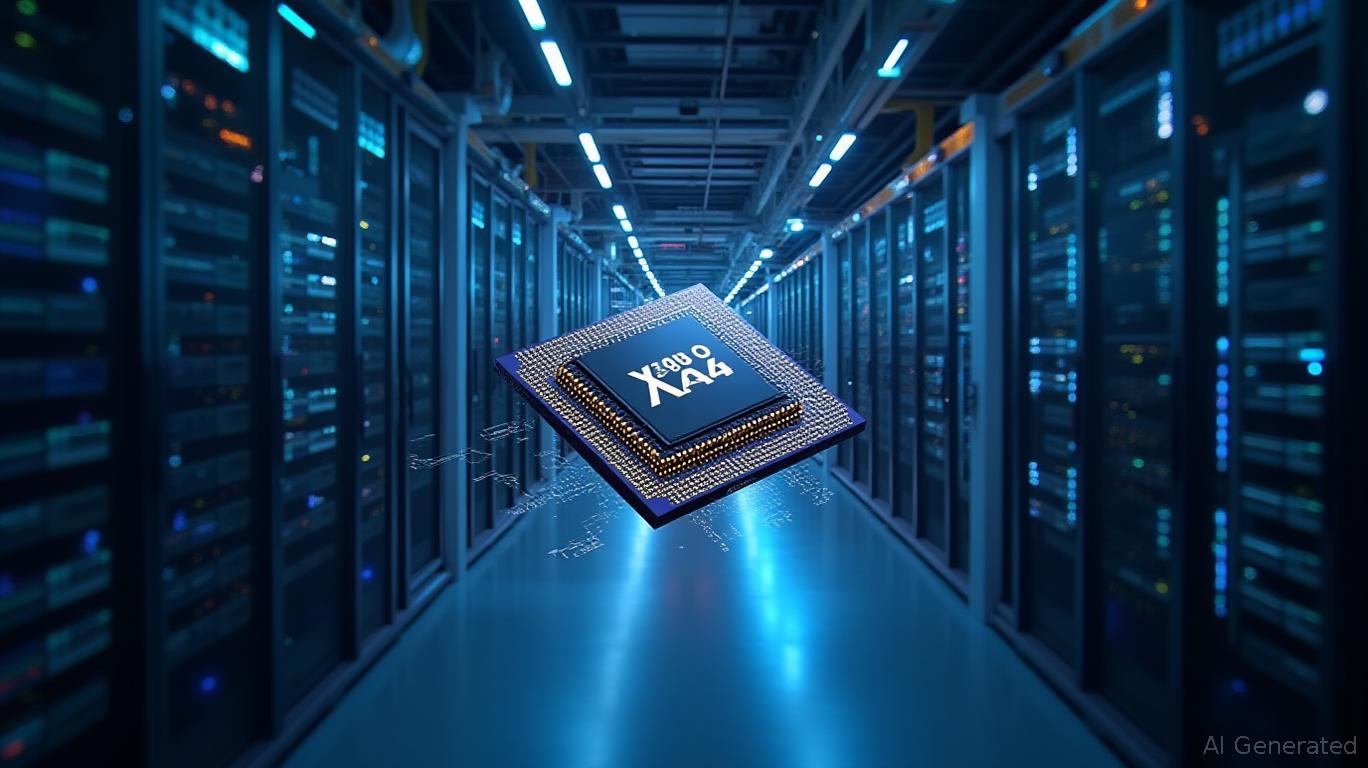Why Broadcom's Dip is a Contrarian's Gold Mine: AI Chips, VMware, and Dividends
Broadcom Inc. (AVGO) shares plummeted over 3% on June 1, 2025, despite reporting record Q2 results and modestly beating earnings estimates. The sell-off, driven by investor disappointment over perceived “cautious” AI revenue guidance, presents a rare contrarian opportunity. Here's why the dip masks a compelling long-term investment in a semiconductor titan positioned to dominate AI's next phase.
The Crash: A Mismatch of Expectations, Not Reality
Broadcom's Q2 results were unequivocally strong: $15.0 billion in revenue (+20% year-over-year), $6.4 billion in free cash flow, and AI semiconductor revenue soaring to $4.4 billion (+46% YoY). Yet shares tanked as investors fixated on Q3 guidance of $5.1 billion in AI revenue—a 16% sequential jump—viewing it as insufficient in a market hyped by NVIDIA's AI prowess.
But this reaction overlooks critical context.

Contrarian Edge #1: AI Semiconductor Leadership is Underappreciated
The semiconductor sector is bifurcating: companies delivering tangible AI revenue growth—like Broadcom—are being overshadowed by hype-driven peers. Broadcom's AI segment now accounts for ~30% of total semiconductor revenue, with hyperscalers like Amazon and Microsoft investing heavily in its networking gear for large language model training.
Critically, Broadcom's AI chips address a bottleneck in AI infrastructure: data center networking. While GPUs grab headlines, Broadcom's switching silicon ensures those GPUs can communicate at scale. This “unsung hero” role is undervalued by traders fixated on quarterly EPS, but it's foundational to the AI revolution.
Contrarian Edge #2: VMware Synergies Add Stability
While the spotlight is on AI, Broadcom's Infrastructure Software segment (including VMware) delivered $6.6 billion in revenue (+25% YoY), proving its dominance in enterprise software. The VMware acquisition, once a regulatory concern, is now a cash cow. Combined with strong networking software sales, this segment provides a steady earnings base to offset cyclical chip demand.
Contrarian Edge #3: Dividends and Buybacks Offer a Safety Net
Broadcom returned $7.0 billion to shareholders in Q2 alone, with dividends ($2.8B) and buybacks ($4.2B) at record levels. Its dividend yield of ~1.3% may seem modest, but it's underpinned by a fortress balance sheet ($17.5 billion in cash) and free cash flow visibility. This stability contrasts with pure-play AI stocks reliant on speculative growth.
The Market's Mistake: Overpricing Near-Term, Underpricing the Long Game
Analysts fixated on Q3 guidance missed the bigger picture: Broadcom's AI revenue is still in an early scaling phase. The $5.1 billion Q3 target implies ~$20 billion annualized AI revenue by early 2026—a figure no other semiconductor player can match. Meanwhile, competitors like NVIDIA face margin pressures from GPU price cuts, while Broadcom's networking chips enjoy stable pricing.
The market's reaction also ignores macro tailwinds. AI adoption in enterprise IT is accelerating: 60% of Fortune 500 companies now use Broadcom's AI-infused networking gear for machine learning projects. This secular shift isn't captured in quarterly EPS but will compound Broadcom's value over years.
Valuation: A Contrarian's Discount
At a forward P/E of ~22x (vs. its 5-year average of 25x), AVGO is now cheaper relative to peers despite superior cash flow. Even after the dip, its PEG ratio (Price/Earnings to Growth) of 1.2 suggests modest overvaluation, but this ignores the AI tailwind. Compare this to NVIDIA's PEG of 2.8—Broadcom is a bargain in a high-growth tech sector.
The Play: Accumulate on Weakness, Target $650 by Q3 2026
Investors should use the June dip to average into AVGO shares. Key catalysts ahead include:
1. Q3 Earnings (Oct 2025): A beat on the $5.1B AI revenue guidance would catalyze a rebound.
2. VMware's AI-Cloud Synergies: New AI-driven software products could boost Infrastructure Software margins.
3. Dividend Growth: A 5-7% annual dividend raise is feasible given cash flows.
Risks: Regulatory and Macroeconomic Clouds
U.S.-China trade tensions and potential antitrust scrutiny linger, though Broadcom's Q2 press release already flagged these as “forward-looking risks.” These are sector-wide issues, not dealbreakers.
Final Take: A Contrarian's Dream
When the market panics over “modest” AI guidance from a company delivering 46% AI revenue growth, it's time to buy. Broadcom's blend of AI leadership, stable software cash flows, and shareholder-friendly policies make it a rare “defensive growth” stock. The dip is a buying opportunity—accumulate now, and let the AI chip boom do the rest.
Investment Recommendation:
- Buy Target: $525-$550 (June 2025 dip range)
- Hold Until: Q3 2026 earnings, with a price target of $650
- Stop-Loss: Below $480 (2025 lows)
The AI revolution isn't about quarterly fireworks—it's about consistent execution. Broadcom's got that in spades.

Comments
No comments yet